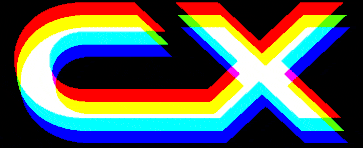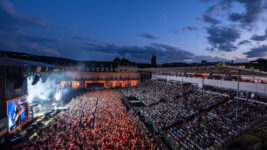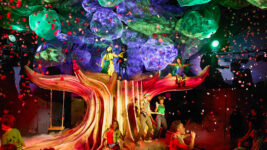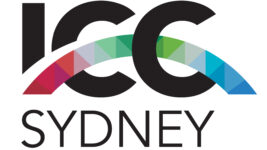ROAD TEST
10 Feb 2025
CHAMSYS QUICKQ 20
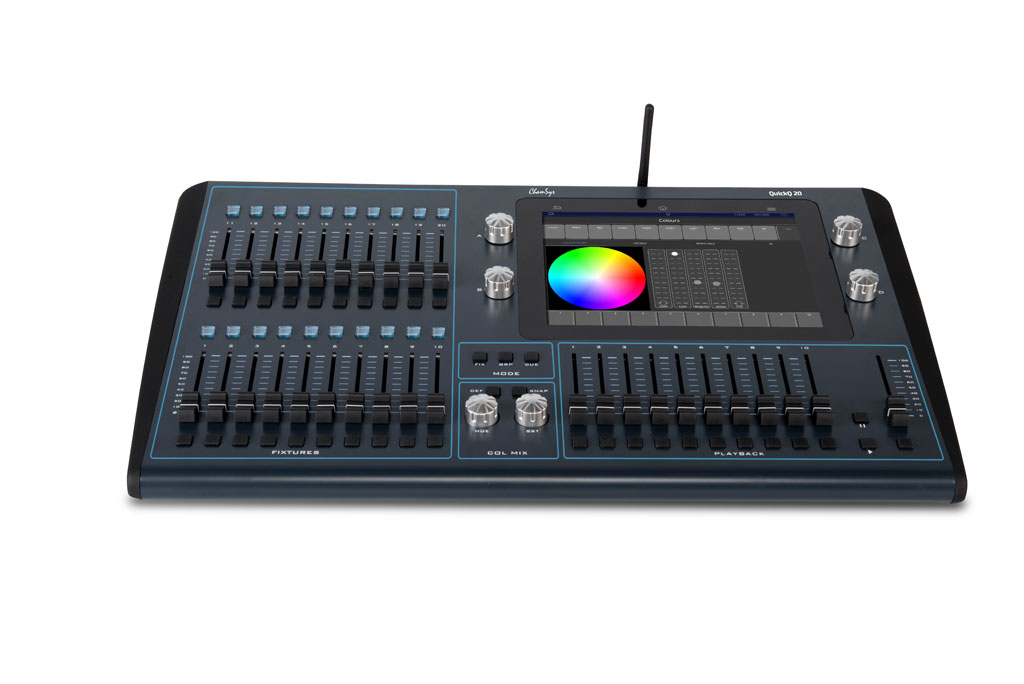
Subscribe to CX E-News
The ChamSys QuickQ 20 is a compact lighting console capable of operating as both a ‘dimmer board’ and a moving light console. The QuickQ20 is part of the ChamSys QuickQ range of small lighting consoles, complimenting their full size MagicQ range. Emphasis has been placed on useability for both programming and playback as well as affordability.
While it may be obvious, it is worth mentioning here that it is an all-in-one console. It’s not a laptop with a wing, or a console where you need an external monitor and a keyboard that you need to attach. As for control hardware, the ChamSys QuickQ 20 is all you need to run your show. The console has built-in Wi-Fi and can be run off the accompanying mobile app.
Construction
The console has a sleek, rounded modern design. It looks and feels quite hardy and robust. It takes up a small footprint in an operating area too, requiring only slightly more space than a laptop. Very handy for gigs where operating space is at a premium or you have a situation where one AV operator is required to operate sound, lighting and vision cues.
The dimensions of the console are 565mm x 350mm x 106mm (W x D x H). Weighing just 5.2kg, it is a very easy unit to transport. At that size you could get away with taking it on as carry-on luggage without the road case. The dimensions in the case are 650mm x 490mm x 210mm (W x D x H) and cased, weighs 16kg in total.
The desk is centred around a 9.7 inch touch screen with four encoders. It has a grand master fader, 10 master playback faders and 20 multi-function fixture faders.
It has two 5-pin XLR outputs at the back of the desk, an HDMI plug for an external monitor, one Ethernet port, two USB ports, and audio input. Audio output is also achievable with a software update.
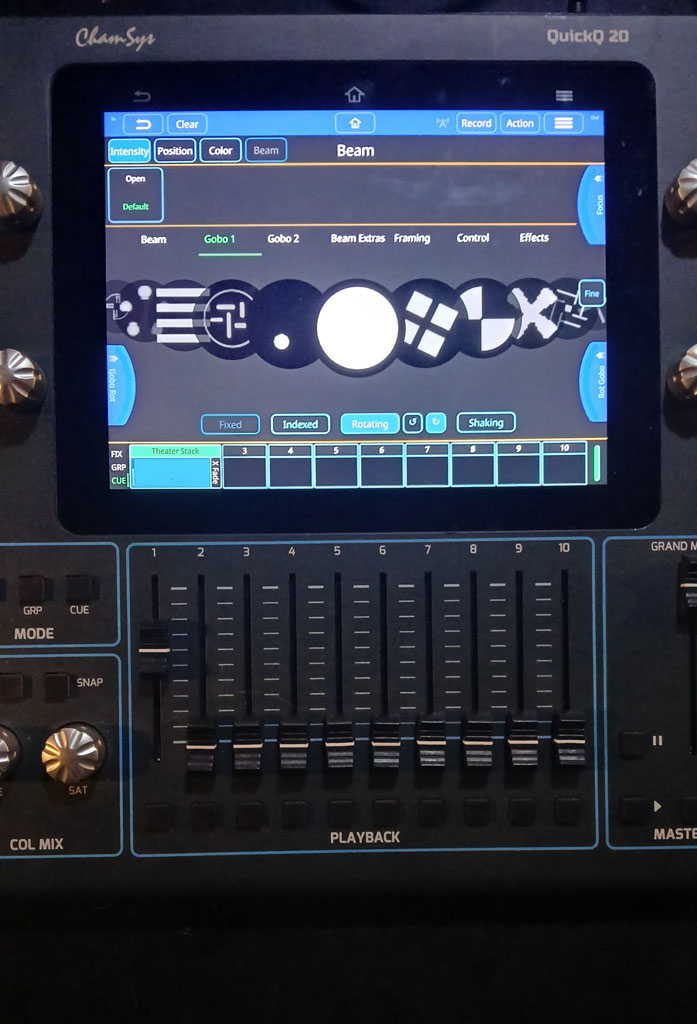
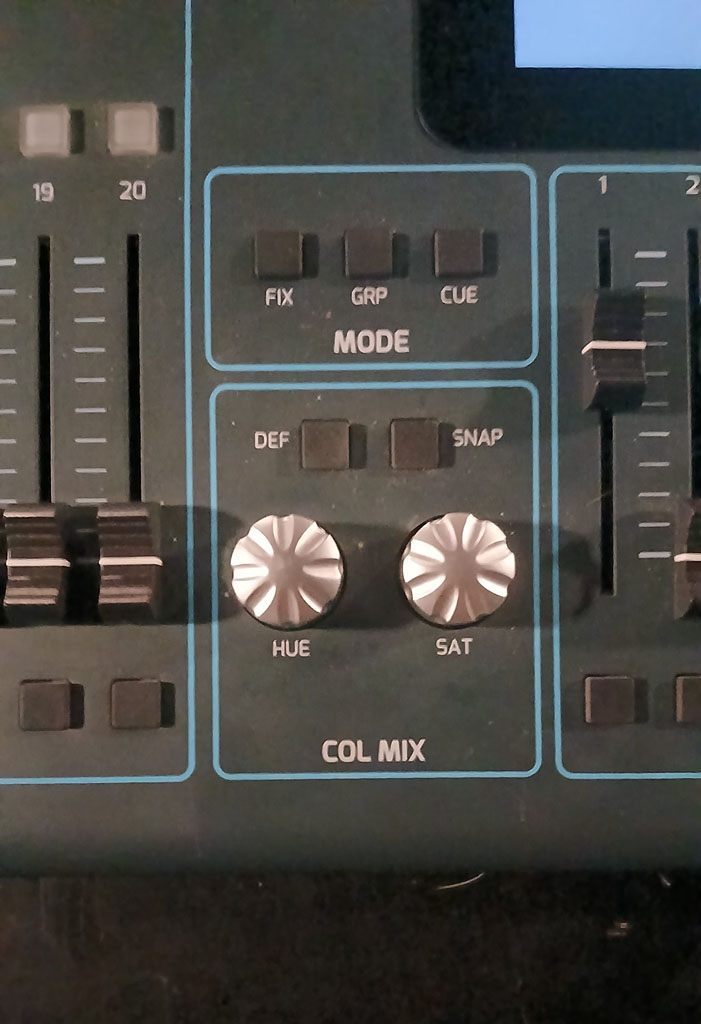
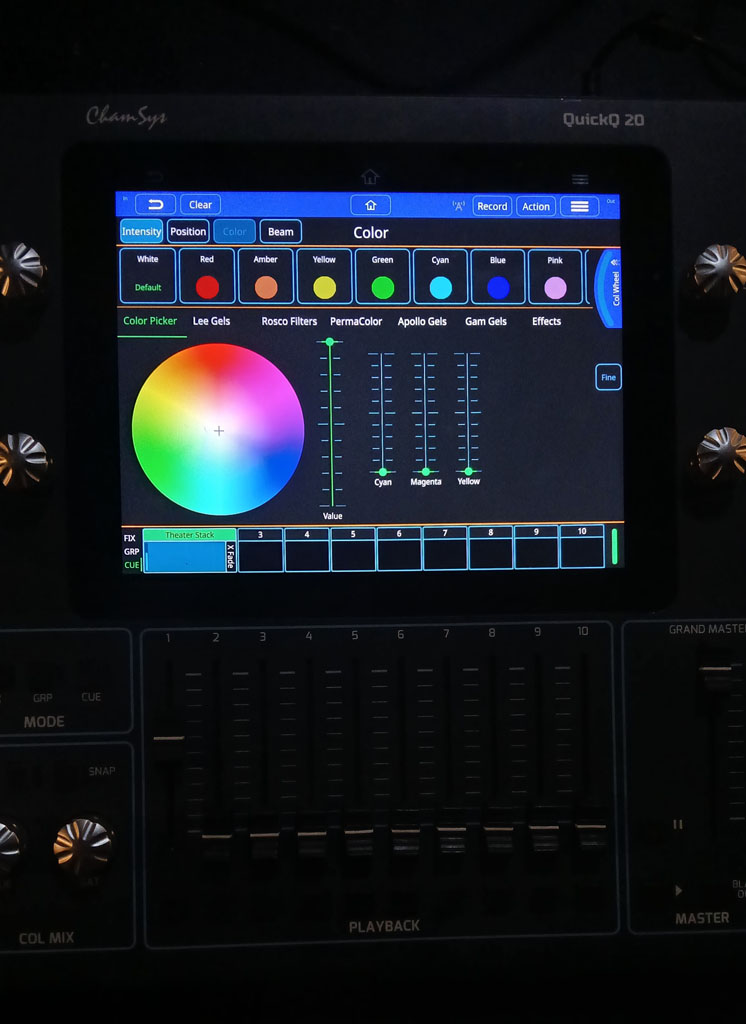
Applications and Features
The ChamSys QuickQ 20 has a very intuitive set up and feel to it. Many of the applications and features of this console are geared towards useability. It feels as though the development team have tried hard to make everything accessible with just a few touches or button presses.
This console is capable of supporting two Universes worth of lights, so 1,024 DMX channels; more than enough to cover a smaller set-up.
The console can automatically detect and patch RDM compatible fixtures, another nod to useability. The desk is compatible with MIDI timecode, allowing it to be run in sync with other technical elements. The OSC protocol is supported as well.
Offline designer software is available for both Mac and PC. It has a comprehensive on-board fixture library with well over 30,000 files. It also has a gel library in its colour picker which is perfect for trying to match up colours in your LEDs and conventional fixtures. Works well too if you are a bit old-school and reference your colours by gel numbers. It has its own onboard FX generator allowing you to build effects from scratch.
The more obvious limitation of the desk is that it can only control two Universes. If you have a bigger lighting rig you will need a bigger console; a pretty reasonable compromise.
It’s a perfect desk for a smaller venue, for breakout room scenarios, and for basic lighting set ups. It is a quick and easy desk to set up and pack away, making it that much more versatile as to where and how it is used. It’s a great desk if you need to get something basic up in a hurry. You could also run your venue house lights off it as well.
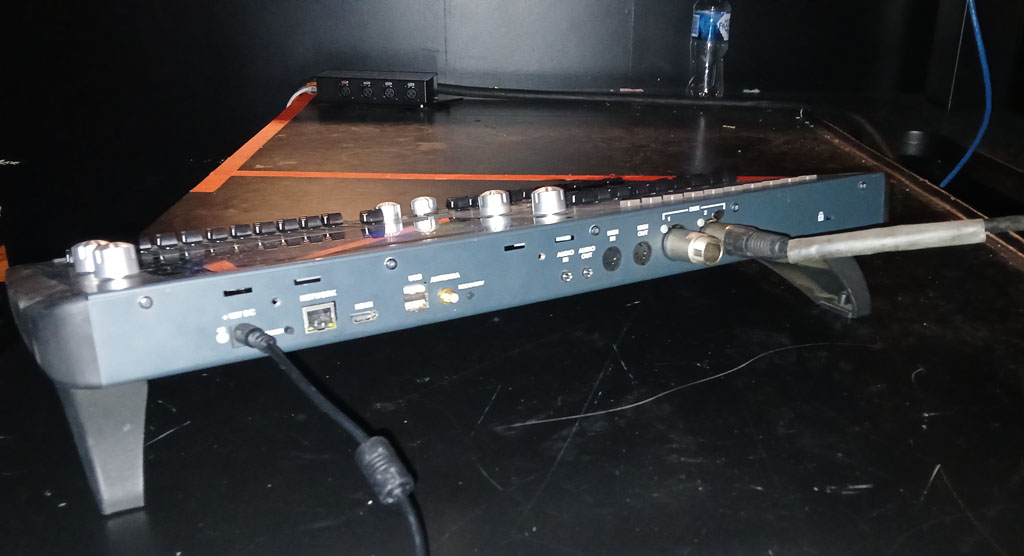
Control and Programming
The ChamSys QuickQ 20 is very user-friendly for a novice user. There are a lot of inbuilt presets which make it much quicker and easier to get up and running. The console is well laid out and easy to follow.
As you are programming and going through the presets, the screen display resembles something much closer to what you would expect on an app in a phone or tablet than you would on a lighting console.
Much like any good family of consoles, show files saved on the QuickQ 20 are compatible with the full-size range of MagicQ consoles. Probably not the most relevant feature in this instance, given the two Universe limit, but still great to have.
One thing I did appreciate on the programming was how fine and how smooth (ie: non ‘steppy’) the fine pan and tilt were. Not sure if the credit should go to the console or the light it was controlling but it is worth mentioning how precise some of the positioning can be in fine mode.
The colour control section specifically covers hue and saturation. It gives you a different way to pick and mix your colours. I found myself gravitating towards picking a pre-programmed colour closest to what I was after and then playing with the hue and saturation to get what I wanted, although this isn’t the only way to mix colours.
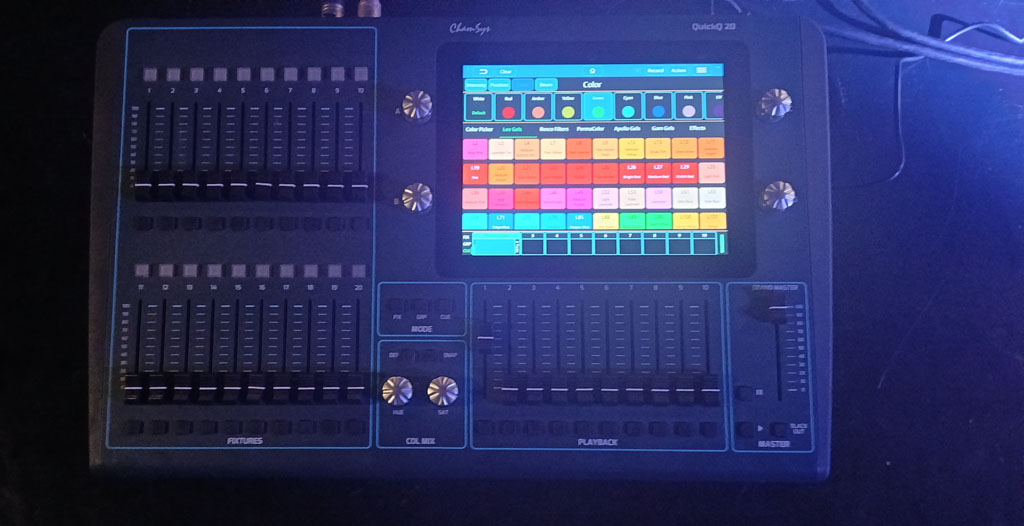
Help and Support
Specifically aimed at the novice user, the QuickQ interface easily leads you through setup, programming and operation of the console. I found it very easy to use. There is also a large database of information on their website with extra help files.
Verdict
It feels as though the console is designed around the single centre touch screen. Because of this, it has a very intuitive feel to it and would likely feel that way for anyone familiar with using touch screen interfaces for controlling AV set ups. It seems to be designed and set up for basic programming and playback.
I feel like anyone who can work their way around an iPad could use the Chamsys QuickQ 20 if they were given the desk with all the fixtures patched in. It is a clever move by Chamsys. It significantly shortens the learning curve for new and novice operators and offers a segue to their larger, more complex range of lighting consoles.
You wouldn’t run anything too complex off this console or anything that is too programming heavy, but you could easily run a conference, dinner or even a band lighting rig off the ChamSys Quick Q20, provided you could get it all on two Universes.
The developers have thought hard about the price point they are aiming for, and who the actual end users are (as opposed to who might be buying it). The app-like simplicity of the software is probably the main selling point for this desk.
Product Info: chamsyslighting.com
Distributor Australia: ulagroup.com 1300 852 476
Distributor Australia: www.avecorp.com.au 03 9706 5325
Distributor New Zealand: www.mdrlighting.co.nz 06 355 5073
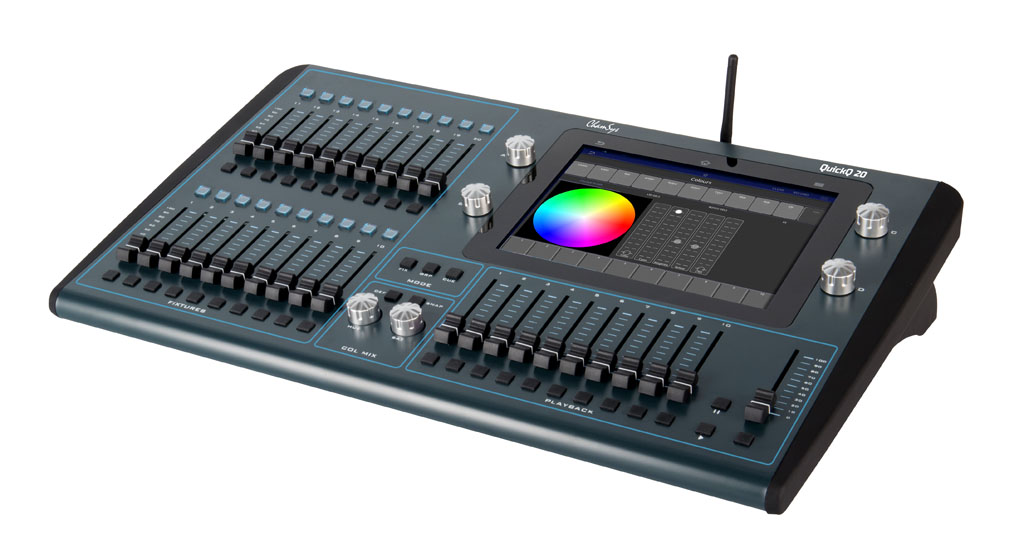
THE SPECS
- Universes upported: 2
- Direct DMX Outputs 5-Pin XLR: 2 Master Playback Faders: 10
- Multi-Function Fixture Faders: 20 Bump Buttons
- Attribute Encoders: 4
- Dedicated Hue/Saturation Encoders Inbuilt 9.7” Multi-touch Display External Monitor: 1920 x 1080 HDMI Inbuilt Wi-Fi
- Network Port USB Ports: 2
- Audio Input: 1
- Audio Output: 1 MIDI Ports in/out
- Software Specifications
- Max Number of DMX Channels: 1024 Max Number of Cue Stacks: 10
- Max Number of Chases: 10
- Midi & Midi Timecode Supported OSC Supported
- RDM Autopatch for fast show patching Fixture library of over 30,000 fixture files Built in FX generator
- Colour picker and inbuilt Gel library
Subscribe
Published monthly since 1991, our famous AV industry magazine is free for download or pay for print. Subscribers also receive CX News, our free weekly email with the latest industry news and jobs.
